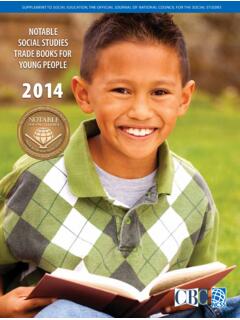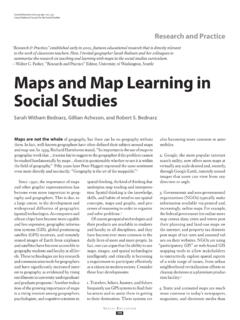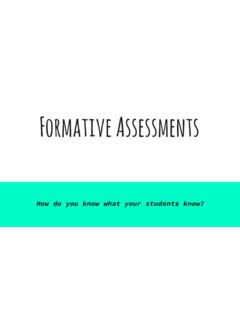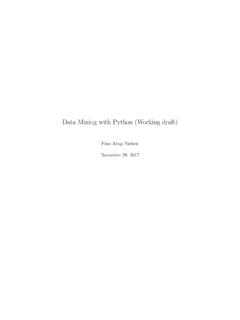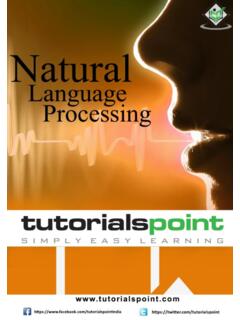Transcription of LESSON PLAN - Social Studies
1 plan HISTORY UNFOLDED: US Newspapers and the HolocaustGRADE LEVEL9 12 SUBJECT AREASn History and Social Studies > US Historyn History and Social Studies > World Historyn English and Language Arts > Journalismn English and Language Arts > Media LiteracyLESSON OVERVIEWThis LESSON is designed to help students better understand American responses to the Holocaust within the socio-economic and political context of the United States during the 1930s and 1940s. It promotes historical thinking and media literacy skills through research and analysis of primary source documents ( , historical newspapers) on microfilm or in digitized collections.
2 In most cases, this LESSON will require students to perform research at local libraries or historical societies. In some cases, digitized collections may be accessible online. The LESSON will take two to three class periods, which include: n Day One: Students assess their knowledge and assumptions about Americans and the Holocaust. They develop background knowledge about specific Holocaust-related events, and they prepare for their research. n Day Two: Students perform primary source research either online or at a local library or archive. They record their discoveries.
3 N Day Three: Students record and analyze the articles they uncovered. They submit their findings to the History Unfolded website and discuss the research process and their findings with the class. The class discusses what they have learned about their local community in the larger context of American responses to the Holocaust in the 1930s and it took place in Europe, the Holocaust is also an American story. Many newspapers reported on events in Europe, and broad segments of the American public knew of the threats of Nazism, but such awareness seldom translated into action to help Europe s endangered Jews.
4 Americans responses were shaped by competing factors, such as isolationism, prejudice, economic uncertainty, and national security concerns. This LESSON challenges students to consider how such factors influenced the newsworthiness of Holocaust-related events, as well as how news of the Holocaust was presented to American Two to three class periods. (Adaptable from two 45-minute class periods up to three 80-minute blocks. )OBJECTIVESS tudents will:1. Identify, closely read, and analyze newspaper articles to determine what information was available to Americans about the threat of Nazism, the persecution of Jews before the war, and the systematic murder of Jews during the war, as well as how Americans responded to that Identify political, Social , and economic pressures and conflicting motivations, which may have influenced local news reporting about the Holocaust during the 1930s and 1940s ( , the Great Depression, the New Deal, fear of Communism, native racism and antisemitism, isolationism.)
5 And anti-immigration sentiment ).3. Compare and contrast placement and prominence of their assigned article with other news items in their local photo: A newsboy in Montrose, Colorado, in 1939. Library of Congress COMMON CORE STATE STANDARDSn English Language Arts: Reading Informational Texts 1, 6, 7n History/ Social Studies 1, 2, 3, 7, plan HISTORY UNFOLDED: US Newspapers and the Holocaust4. Evaluate the importance of headlines, article placement, and vocabulary used by newspapers to inform readers about the Based on available evidence, draw conclusions about what members of their local community may have known about the Holocaust and how this could have influenced their responses to & RESOURCESH andoutsn Student packetsn Short historical overview on US Newspapers and the Holocaust Online Contentn Event descriptions provide background information, search keywords.
6 And key dates for the topics students will researchTechnologyn At least one computer with Internet access is required for this lessonn Mobile devices (phones, tablets, or cameras) for students to capture digital images, if performing microfilm researchPREPARATION1. Review the following online resources:n The History Unfolded project websiten The United States and the Holocaust (a short historical overview)n United States Policy and Its Impact on European Jews (a short historical overview)n A short audio interview with Professor Laurel Leff on the New York Times coverage of the Holocaust2.
7 Identify newspapers that were published in or near your community in the 1930s and 1940s and locate collections that you and your students may access. If there are no library or archive collections in your vicinity, consider using online digital collections for student Create user profiles for you and your students on the History Unfolded website, and create a group for your class. Make sure your students have joined the class group. This will allow you to monitor their Based on class size, student interest, and curricular focus, select a subset of events from the History Unfolded website for your students to Print out the student packets (one per student) and information for the events you selected (one set per group).
8 The website provides background information, keywords, and suggested date ranges to frame research. Students also may access the event pages online if preferred. 6. plan ahead if students will be using microfilm holdings at a local library or Familiarize yourself with best practices for newspaper research:n Determine the frequency and timing of your newspaper s publication cycle (daily, weekly, evening, etc.)n Taking the publication cycle into consideration, determine the appropriate time window to search withinn Articles about Holocaust-related events often appeared on inside pages of newspapers.
9 Frequently, they were small articles or even appeared within larger articles on related topics. Therefore, carefully examine all pages of the newspapern Use appropriate keywords for your search and, if you are performing an online search, consider combinations of keywordsn Do not rely solely on keyword searches, which can miss terms and concepts; if you know that an event happened on a specific date, scan through articles in the next day s paper for news of the event plan HISTORY UNFOLDED: US Newspapers and the HolocaustPROCESSDAY ONEI ntroduction: 10 15 minutes*1.
10 Arrange students in small groups of three to Ask students, What do you think Americans knew about the events now known as the Holocaust while it was happening? 3. In groups, students read the handout US Newspapers and the Holocaust and discuss how it influences their perspectives on Americans and the Holocaust. Allow groups to share in response to the handout. * If you are teaching this LESSON outside the context of a larger unit on the Holocaust, you may want to conduct a brief diagnostic assessment of student s prior knowledge of the Holocaust, and define the Holocaust for your : 25 55 minutes1.
